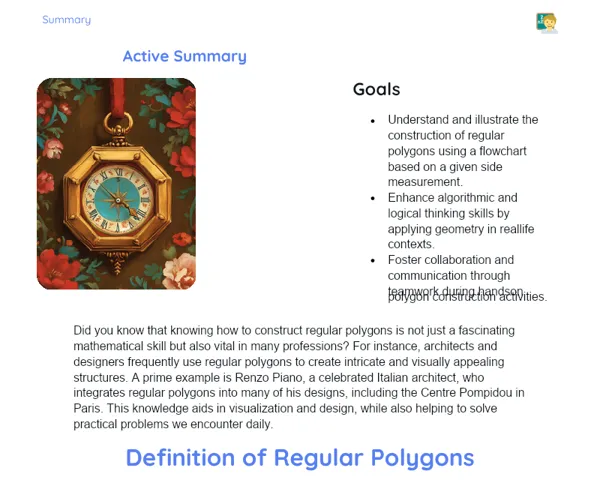Goals
1. Understand the Cartesian coordinate system, including the roles of the abscissa (x-axis) and the ordinate (y-axis).
2. Identify specific points in a Cartesian plane and provide their coordinates.
3. Enhance spatial reasoning and logical thinking abilities.
4. Apply mathematical concepts to practical, everyday situations.
Contextualization
The Cartesian coordinate system is an important concept that finds application in numerous fields and our day-to-day lives. It allows for accurate location of points on a 2D plane, making navigation and map-making simpler. For instance, in creating digital games, Cartesian coordinates help in positioning characters and objects within the game environment. Similarly, GPS systems use these coordinates to pinpoint locations on Earth. Grasping this system is essential for tackling practical problems and modern technological challenges.
Subject Relevance
To Remember!
Cartesian Coordinate System
The Cartesian coordinate system is a way of representing points on a plane using a pair of numerical values termed coordinates. These coordinates include an abscissa (x-axis value) and an ordinate (y-axis value), which together pinpoint the exact location of a point on the plane.
-
Enables accurate location of points on a plane.
-
Facilitates navigation and map creation.
-
Commonly used in fields like engineering, architecture, and programming.
Abscissa (X-Axis)
The abscissa refers to the value that indicates a point's position along the horizontal axis (x-axis) in a Cartesian plane. It is the first value in the ordered pair and shows the distance of the point from the vertical axis (y-axis).
-
Represents the horizontal position of a point.
-
Is the first value in an ordered pair.
-
Determines how far the point is from the y-axis.
Ordinate (Y-Axis)
The ordinate is the value determining a point's position along the vertical axis (y-axis) in a Cartesian plane. It is the second value in the ordered pair that indicates the distance of the point from the horizontal axis (x-axis).
-
Represents the vertical position of a point.
-
Is the second value in an ordered pair.
-
Determines how far the point is from the x-axis.
Practical Applications
-
Game Development: Cartesian coordinates are used to position characters and objects accurately in the virtual space of a game, allowing for realistic movement and interaction.
-
GPS Navigation: GPS systems rely on Cartesian coordinates to pinpoint a precise location on Earth's surface, aiding in route planning and navigation.
-
Engineering and Architecture: Professionals in these fields utilize Cartesian coordinates to draft blueprints and technical projects, ensuring proper placement of every element.
Key Terms
-
Cartesian Coordinates: A system for representing points in a plane using a set of numerical values.
-
Abscissa: The value representing a point's position along the horizontal axis (x-axis).
-
Ordinate: The value representing a point's position along the vertical axis (y-axis).
Questions for Reflections
-
How can grasping Cartesian coordinates simplify your daily tasks?
-
In what specific ways are Cartesian coordinates used in professions like engineering and architecture?
-
Think of a project or activity you want to undertake. How might you incorporate the Cartesian coordinate system to plan and execute that project?
Drawing Figures on the Cartesian Plane
To reinforce your understanding of Cartesian coordinates, you will create geometric figures on the Cartesian plane and identify the coordinates of each vertex.
Instructions
-
Grab a sheet of graph paper and draw a Cartesian plane with clearly labelled x and y axes.
-
Choose three different geometric shapes (for example, a triangle, a square, and a rectangle).
-
Draw each shape on the Cartesian plane, ensuring each vertex aligns with the grid intersections.
-
Identify and note down the coordinates of every vertex of your drawn shapes.
-
Swap sheets with a classmate and see if you can accurately identify the vertex coordinates of each other's figures.



